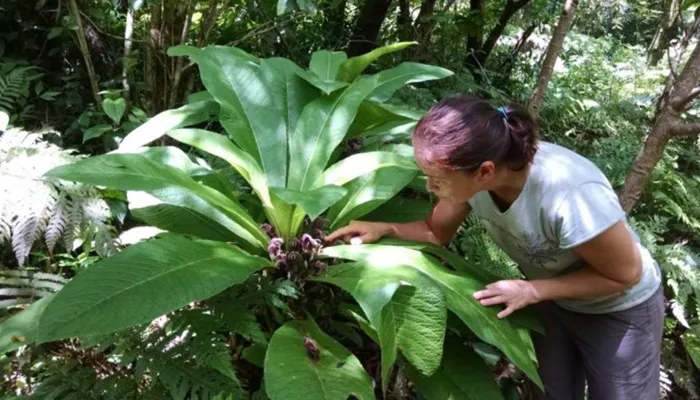Federal Funding to Bolster Hawaiian Plant Conservation and Climate Resilience.
Funds from the U.S. Fish and Wildlife Service, allocated through the Inflation Reduction Act, will be used to identify translocation sites for 425 endangered Hawaiian plant species. The initiative aims to enhance the plants’ resilience to climate change, ensuring their survival in the face of environmental challenges.
Senator Brian Schatz (D-Hawaii) emphasized the importance of this investment for the state’s future. “Recovering our native plants and preserving our ecosystems are essential to improving Hawai‘i’s resilience to the climate crisis,” Schatz said. “Through investments like these, we’re protecting the natural resources unique to Hawai‘i and making our environment more resilient for years to come.”
Franny Brewer, Program Manager for the Big Island Invasive Species Committee, expressed enthusiasm upon learning about the funding. Although unaware of the allocation beforehand, Brewer was particularly pleased, noting that plants often receive less attention compared to wildlife. “Everyone knows we’re losing birds, but people forget about the plants,” Brewer remarked. “It’s important to have the plants to support the native ecosystems.”
Hawai‘i has been dubbed the “Endangered Species Capital of the World,” according to the state’s Division of Forestry and Wildlife (DLNR). The DLNR highlights the urgent situation facing the state’s native flora, with over 100 plant taxa already extinct and more than 200 others having fewer than 50 individuals remaining in the wild.
The Division estimates that Hawai‘i is home to approximately 1,400 vascular plant taxa, including species, subspecies, and varieties. Nearly 90% of these plants are found nowhere else in the world. Alarmingly, 366 Hawaiian plant taxa are listed as endangered or threatened by federal and state governments, with an additional 48 species proposed for endangered status.
Despite making up less than 1% of the U.S. landmass, Hawai‘i accounts for 44% of the nation’s endangered and threatened plant species, according to the DLNR.
To combat this crisis, the DLNR operates the Hawaiian Rare Plant Program, which focuses on rebuilding the genetic stock of endangered plants. Brewer praised the efforts of those involved in this program, noting that they often go to great lengths to locate and protect Hawai‘i’s rarest plants, some of which are down to just a few individuals. In some cases, workers rappel down cliffs to find a single plant clinging to a rocky ledge.
The Big Island Invasive Species Committee also plays a critical role in protecting native plants by removing invasive species. Brewer explained that the nonprofit organization focuses on eliminating incipient invasive plants—those in the early stages of establishing themselves on the island—before they become widespread and pose a greater threat to native ecosystems.


